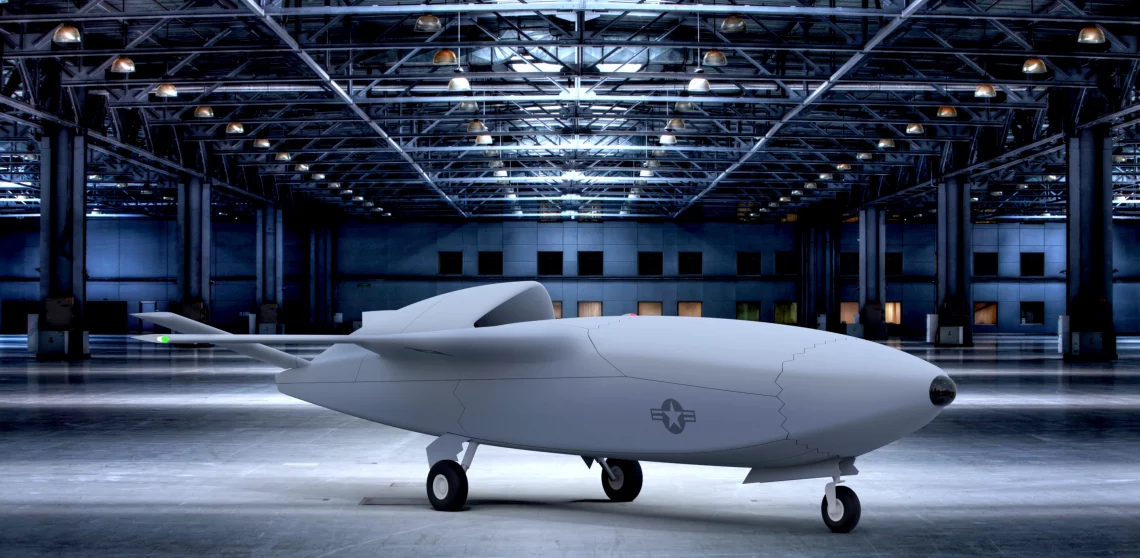Digital twins? Check. The tech that powers self-driving cars? Absolutely. Tech to help drone swarms communicate and move in synch? Yes, please.
On the heels of its successful Agility Prime rapid prototyping initiative, the Air Force is getting ready to launch Autonomy Prime – its intensive effort to advance autonomous technologies through partnerships with industry. In September, Air Force innovation arm AFWERX published a request for information to begin its autonomy-focused drive. The request calls for companies in the field to submit white papers and presentations describing how they can tackle the Air Force’s autonomy tech challenges, laying the groundwork for collaboration as the Autonomy Prime project moves forward.
“AFWERX autonomy efforts will focus around technologies or systems which, today or in the near future, may automate or replace various tasks required by the USAF to achieve its mission,” the RFI states. “Any technology or system which can credibly be shown to improve upon or fully automate current Air Force tasks, or which may aid in the completion of Air Force missions may be presented,” it adds.
Tech approved for testing at a newly created “AFWERX Proving Ground” must have a technology readiness level (TRL) of at least 4, meaning that it needs to have advanced beyond the proof-of-concept phase and can be evaluated based on how components work together. Those selected for the division’s “rapid autonomy acquisition process” must be at TRL 6 or above, meaning that a highly functional prototype or model is available for development. The location for this proving ground has not been specified.
Autonomy is an element of Air Force Secretary Frank Kendall III’s fourth “operational imperative:” tactical air dominance. Kendall announced these seven operational targets at the start of 2022, saying that, as manned fighters were too costly to deploy in numbers sufficient to control the air domain, “we need to add attritable, less expensive, uncrewed autonomous aircraft to the mix.”
Accordingly, a major focus of the RFI is unmanned aerial systems that can serve as platforms for autonomous aircraft testing. AFWERX wants to buy and operate “a portfolio of [unmanned] aircraft… for the purpose of executing high tempo autonomy testing and demonstration,” the document states.
“These aircraft will be designed or modified to operate as an open architecture with an isolation layer – thus separating the test article from core flight functionality while allowing rapid iteration and test execution of a variety of technologies,” it adds.
Want More 19FortyFive articles, news, and analysis on the top military, defense, national security, as well as politics and economics news? Make sure to follow us on Google News, Flipboard, YouTube, Facebook, Twitter, and Linkedin. Also, please don’t forget to sign up for our newsletter here. You can also find our code of publishing ethics and standards here.
The drones AFWERX wants are in categories Group 2 or Group 3, meaning between 20 and 1,200 pounds and capable of moving at speeds up to 250 knots, or 288 miles per hour. Both conventional takeoff and landing (CTOL) and vertical takeoff and landing (VTOL) platforms will be considered if they can meet Air Force targets for reliability, performance, availability, and cost.
Also on AFWERX’s wish list, according to the RFI, is a technology that can support rapid testing using digital twin simulation tech and live virtual constructive or virtual reality environments. AFWERX’s hybrid approach of using a physical testing space and a simulated test environment.
The creation of the new “AFWERX Proving Ground” dedicated to autonomous tech development and designed from the start to operate in tandem with simulation and digital twinning shows just how invested the Air Force is in implementing cutting-edge tools to accelerate tech development.
Simulation and testing support tech that AFWERX developers cite interest in includes, among other things, detection algorithms and automated target recognition; sensor data processing hardware or algorithms; human-machine interface; task-focused autonomous software algorithms and systems; and localization.
Autonomy Prime launches as multiple longtime Air Force investments in autonomy get off the ground. The best-known of the bunch, Skyborg, is destined to become a program of record, Air and Space Forces Magazine reported in August. Called “wildly successful” by an Air Force program manager, Skyborg is an artificial intelligence-enabled drone wingman aircraft concept with an autonomous “brain,” designed to fly alongside and network with manned fighters.
Fielding of a Skyborg program could happen in the mid-2020s, the magazine reported, but the Air Force plans to invest $100 million next year in further developing and expanding the concept.
Also this year, Merlin Labs announced it was working with the Air Force to develop an autonomous version of the workhorse C-130J Hercules transport aircraft, making the “most-used cargo platform in the fleet” self-governing, potentially from takeoff to touchdown, per a release. Military.com reported the project could allow the Air Force to shrink crew size amid manpower shortages, although a timeline for a self-flying C-130J has not been made public.
A new research project announced this year between the Air Force and one of 11 historically Black colleges and universities (HBCUs) will also dive into “tactical autonomy,” defined by the service as “autonomous systems acting with delegated and bounded authority of humans in support of tactical, short-term actions associated with a longer-term strategic vision.”
Agility Prime, launched in 2020, has been hailed by the Air Force as a resounding success.
The initiative saw the first successful crewed and service flights of an electric VTOL aircraft, progressing toward the Air Force’s goals of moving the Defense Department toward zero-emission aviation and establishing a “robust domestic market” for eVTOL planes.
The first responses from industry on the Autonomy Prime initiatives are due to AFWERX by October 31.
Hope Hodge Seck is an award-winning investigative and enterprise reporter who has been covering military issues since 2009. She is the former managing editor for Military.com. This first appeared in SandBoxx.

